(Southern) Bacterial Wilt (Ralstonia)
Green wilting, starting from top leaves, especially on hot days. At night leaves may recover, but wilting continues progressively. Streaky brown discolouring on lower stem may occur.
White, slimy ooze exudes from vascular tissue when stem is cut.
A large number of adventitious roots may develop on the stem.
Wet soil favours disease development.
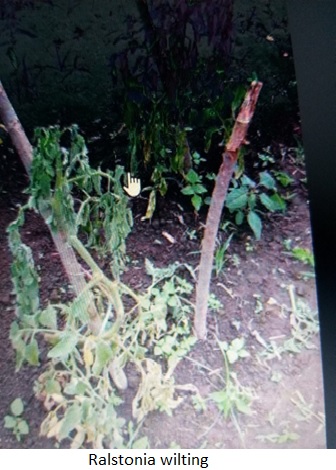
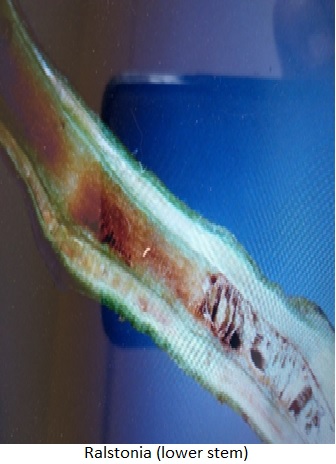
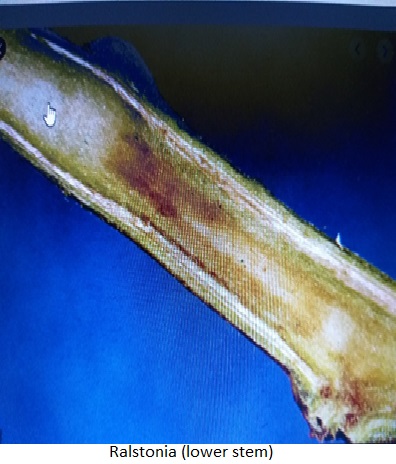
Fusarium Wilt (F. Oxisporum)
Browning of vascular tissue. Sometimes discoloration of stem basis. Sometimes some vein clearing in upper leaves, magnesium-like deficiency; yellowed tissue becomes necrotic followed by wilting of older leaves.
Wilting often starts at one side or part of the plant.
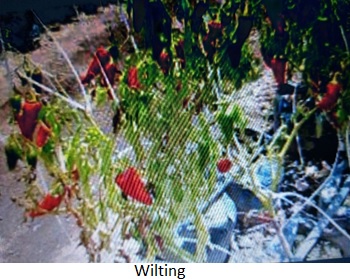
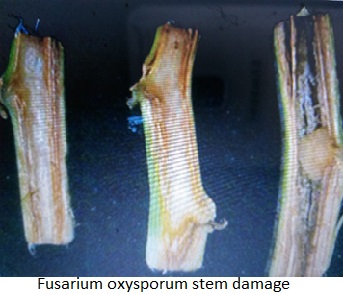
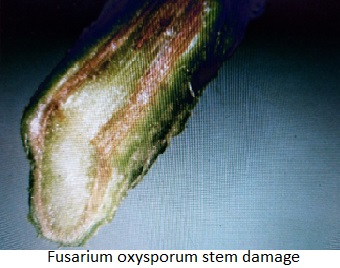
F. Solani
F. solani produces often black spots on the tap root. Dark brown, sunken wounds are formed at the basis of the stem, at scars on leaves and wounds where pruning was done. Later shoot development from cured wounds also showed lesions. Wilting would occur at high temperatures and overall growth is restrained.
Fruits would have pale, longitudinal brown stripes and being flat on the top. Flower and early fruit rot occurs.
Hygiene and careful crop handling (avoiding wounds)
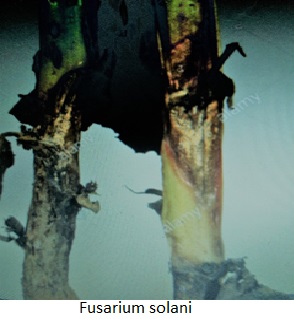
Bacterial Spot (Pseudomonas and Xanthosomas)
Initial small brown, water soaked areas turn dark brown. These spots on the leaf underside are somewhat raised. The different shaped spots become larger and dark brown with lighter coloured centre.
Ultimately leaves turn yellow and drop. Small blister-like spots are formed on fruits and become medium brown.
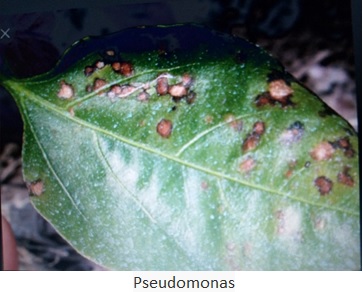
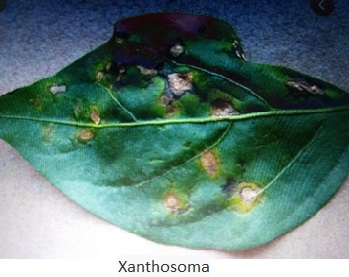
Grey leaf spot (Stemphyllium)
Diseased leaves have numerous tiny round spots (0.5 to 2.5 mm diameter) that are white to grey with a sunken centre and brown edge, resulting in premature defoliation. No other part of the plant is affected.
Somewhat similar to bacterial leaf spot.
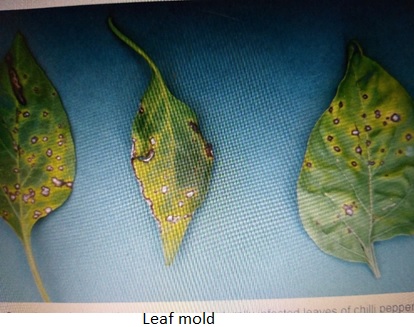
Anthracnose
Develops at 20-24 degr. C, wet (free water, water splashing!).
On leaves, anthracnose generally appears first as small, irregular yellow or brown spots. These spots darken as they age and may also expand, covering the leaves.
On the underside of infected leaves fruiting structures that protrude like pimples, especially along the leaf veins.
On fruits there are small, sunken, circular spots that may increase in size up to 1/2 inch in diameter. The centre of older spots later become blackish.

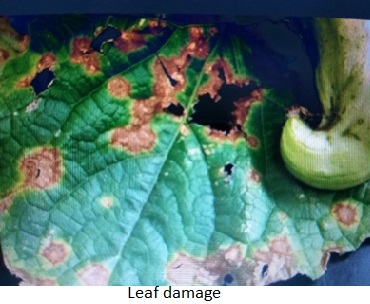
Cercospora
Frog eye spots. Circular spots up to 1 cm, tan or grey centre of 0.5-1mm, dark brown border and yellow hallow. Spots merge. Early leaf drop.
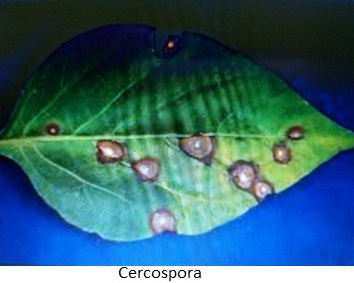
Early blight spot (Alternaria)
Develops by 24-29 degr. C, rainy weather/dew.
Dark spots with concentric rings develop on older leaves first. The surrounding leaf area often turns yellow (bull eye spots, brown surrounded by yellow circle). When spots come together, leaves yellow and drop.
Dark lesions on the stems start off small and slightly sunken. As they get larger, they elongate and develop concentric markings, likewise spots on the leaves.
If early blight gets on the fruits, spots will begin at the stem end, forming a dark, leathery, sunken area with concentric rings. Alternaria is the cause for internal fruit rot.
(Septoria forms tiny filaments-like tissue coming from the spot fruits; Alternaria not).
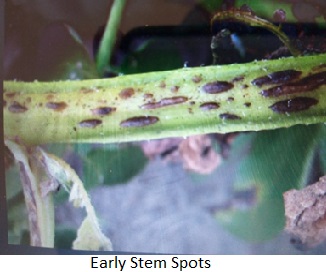
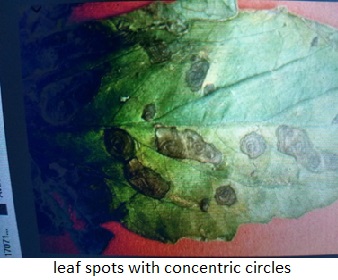
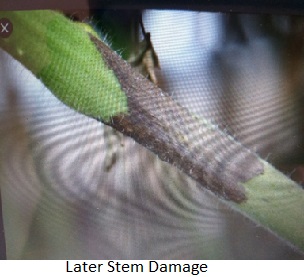
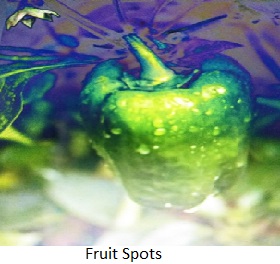
Downy Mildew (Peronospera)
Initial symptoms include light green spots with raised centres on leaves. Tan or gray fungus grows on lower leaf. Large, angular or blocky, yellow areas become visible on the upper surface.[3] As lesions mature, they expand rapidly and turn brown.
The undersides of infected leaves appear water soaked. Purple-brown mold may become apparent. Small spores, shaped like footballs can be formed among the mold.
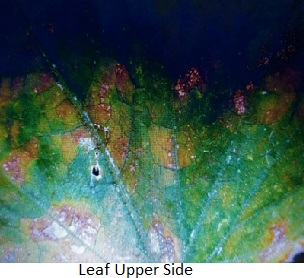
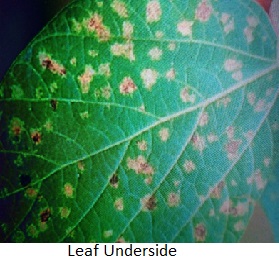
Grey Mold (Botrytis)
Symptoms first appear on petals, injured fruit, or senescing leaves and is initially a dark, water-soaked, slimy lesion and then the affected areas turn brownish-gray and powdery-looking as develops.
Phytophtora (Late Blight)
Leaf infections are not as common but can occur, showing up as circular lesions, initially green and grey spots on lower leaves, later with tan margins and brown centres. White mycelium may form on the leaf underside.
Black lesions develop on crown and lower stem tissues. These lesions expand and can eventually girdle the stem, resulting in permanent wilting above the infection. Areas of the roots become water-soaked and turn a chocolate brown color.
Moist, cream colored lesions form on the fruit, and these areas can become covered with white mold growth. Affected fruit shrivel but remain attached to the plant. Sometimes fruit can become infected in the field, but symptoms do not show until after harvest when the fruit is headed to market.
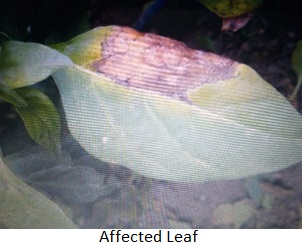
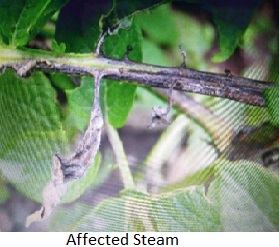
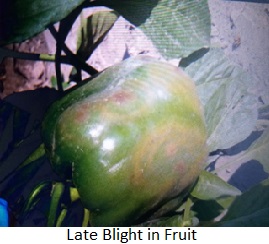
Pythium
Browning of the crown of the stem elongating up to about 1 inch. Skin is brown and often shrivels. (Phytophtora is darker in color).
Roots affected by Pythium are easily peeled off, leaving the core.
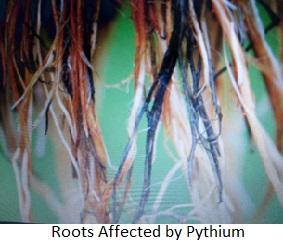
Southern blight (Sclerotium rolfsii, Athelia rolfsii)
On tomato and pepper, the most common symptom occurs on the lower stem where a brown to black lesion usually develops on the stem near the soil line. The lesion will develop rapidly and can completely girdle the stem, which will cause a sudden and permanent wilt of all above parts. Young plants may fall over at the soil line. Under moist conditions, white mycelium will develop on stem lesions and can sometimes extend several centimeters up the stem. After a few days, tan to reddish-brown, spherical sclerotia (1 to 2 mm in diameter) can appear on the mycelia.
The fungus can easily infect fruit in contact with infested soil. Lesions will initially appear as sunken and slightly yellow areas that later become water-soaked, soft, and star-shaped spots. The fruit will collapse within 3 to 4 days and white mycelium can fill the lesion cavity.
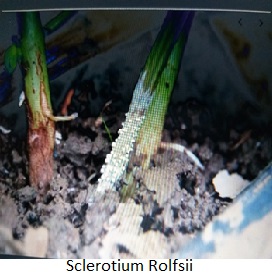
White Mold (Sclerotinia sclerotiorum)
Attacks branches anywhere on the plant. Dark coloring followed by white powdery cover.
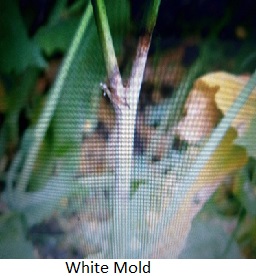
Rhizoctonia
Attacks the plants, especially seedlings, at soil level. Moatly the stem but also may infect roots.
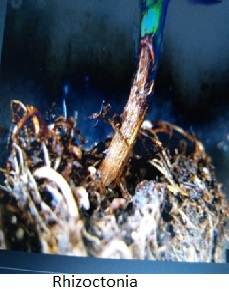
Powdery Mildew
Patchy, white, powdery areas that enlarges and coalesces to cover the entire lower leaf surface.
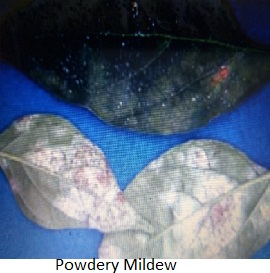
Verticillium
Wilting from top down.




























